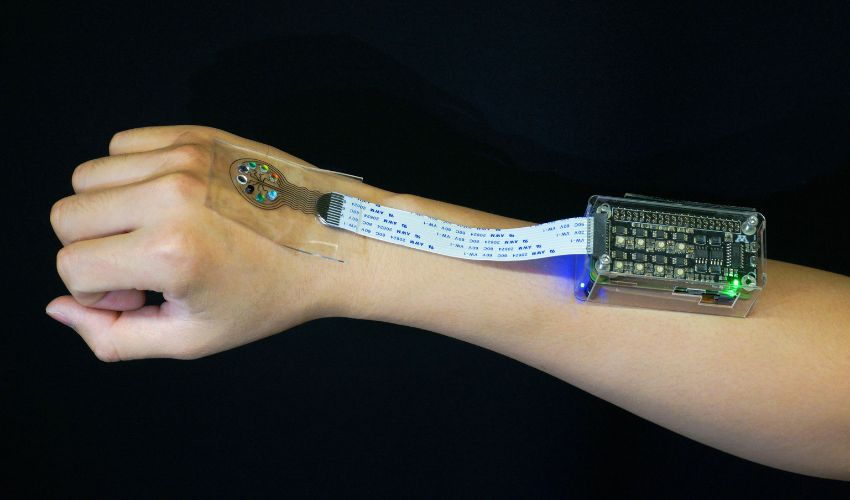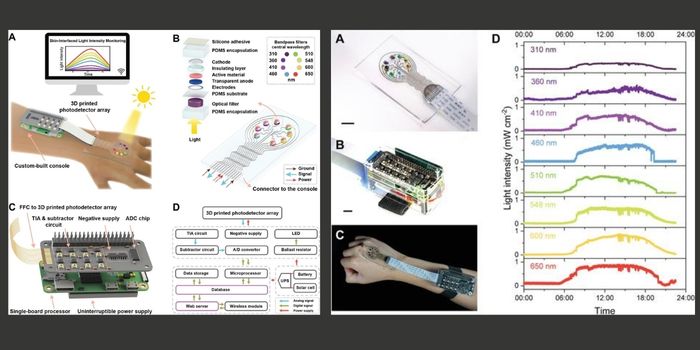3D Printing is Helping Doctors to Treat Lupus

Once again, doctors are turning to 3D printing to solve unique issues in the field of medicine. In this case, engineers and doctors at the University of Minnesota Twin Cities used the technology to develop a unique light-sensing medical device which can be used in the treatment of Lupus, an often debilitating autoimmune disorder. By placing it directly on the skin, the device will enable real-time feedback to correlate light exposure with disease flare-ups. It is expected to help doctors to provide more personalized treatments and information.
Lupus is an autoimmune disorder, meaning that it causes the body’s immune system to attack its own tissues and organs. According to Mayo Clinic, the resulting inflammation can impact various body systems including joints, skin, kidneys, blood cells, brain heart and lungs. Lupus is not only difficult to diagnose but tricky to treat, notably because no two cases will be exactly the same. Considering that the Lupus Foundation of America estimates that 1.5 million Americans and at least 5 million people worldwide have a form of the disease, finding ways to help is critical.

Initial results from the tests have been promising (photo credits: University of Minnesota)
The researchers used 3D printing to create customized devices which in turn can be used for personalized treatments for patients with Lupus. Given the fact that the disease is known to provoke light sensitivity and worsen with exposure to UV exposure (both through sunlight and artificial lights), the authors sought to create a device that could track the correlation of light to symptoms of the disorder. Dr. David Pearson, a University of Michigan Medical School dermatologist and co-author of the study, explained the importance of this type of research, commenting, “I treat a lot of patients with lupus or related diseases, and clinically, it is challenging to predict when patients’ symptoms are going to flare. We know that ultraviolet light and, in some cases visible light, can cause flares of symptoms—both on their skin, as well as internally—but we don’t always know what combinations of light wavelengths are contributing to the symptoms.”
3D Printing a Device to Help Lupus Sufferers
The findings are outlined in a research articles published in Advanced Sciences called “3D Printed Skin-Interfaced UV-Visble Hybrid Photodetectors.” Though it is not mentioned which 3D printing technology was used, it seems that Pearson was inspired by the existence of customized 3D printed wearable devices, including those that had been developed by a colleague in the U of M College of Science and Engineering, Michael McAlpine. McAlpine and Pearson became co-authors on the paper, with a research group working to develop a first of its kind 3D printed device with a flexible UV-visible light detector. This was then integrated with a custom-built portable console allowing for the continuous monitoring of light exposure and then correlate it with resulting reactions. The device consists of multiple layers of materials that were biocompatible silicone base and incorporates electrodes and optical filters.
Of course beyond the ability to personalize the device to each person, there were a number of benefits that resulting from turning to 3D printing. 3D printing is relatively fast compared to more traditional methods and also relatively low-cost. Thanks to this, the researchers hope that these devices will be able to become widespread, providing quick and easy access to the device for treatment. Currently, the research team has already received approval to test the device on human subjects with plans to soon begin enrolling participants in the study.
Pearson concludes, “There is no other device like this right now with this potential for personalization and such easy fabrication. The dream would be to have one of these 3D printers right in my office. I could see a patient and assess what light wavelengths we want to evaluate. Then I could just print it off for the patient and give it to them. It could be 100 percent personalized to their needs. That’s where the future of medicine is going.” You can read the full study HERE.
What do you think of the use of 3D printing to create a device that could improvement Lupus treatment? Let us know in a comment below or on our LinkedIn, Facebook, and Twitter pages! Don’t forget to sign up for our free weekly Newsletter here, the latest 3D printing news straight to your inbox! You can also find all our videos on our YouTube channel.
*Cover Photo Credits: ISM / Medical Images







Very good article I am cardiology have a few 3D printer user